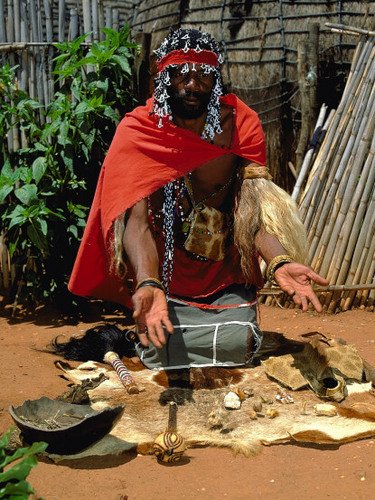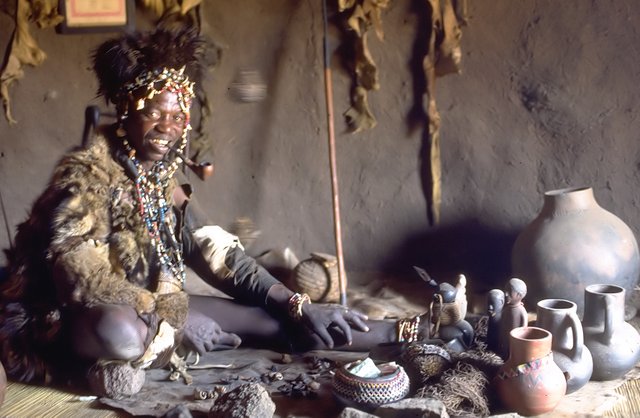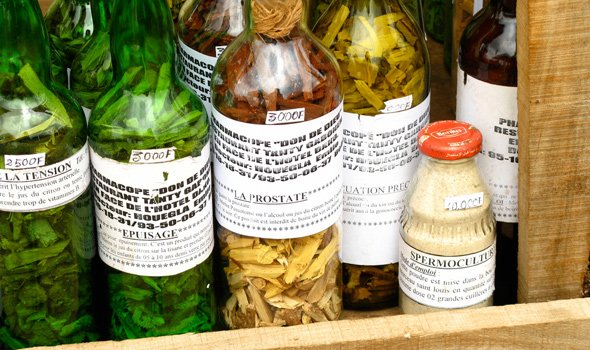Sangomas, Inyangas and muti - African culture cures
I have always been a little fascinated by the African traditional healing methods and beliefs. Although it can be scary in some ways to those of us who do not understand it, it's quite surprising how those who practice and receive it are very trusting and not scared at all.
Traditional African medicine is closely linked to traditional African religion, which is largely focused on the relationship between the living and their ancestors. Illness, for example, is generally thought to be the result of the ancestors withdrawing their goodwill.
The origins of traditional African medicine are steeped in their ancient culture. Here in South Africa, it is estimated that up to 80% of the African population still consult traditional healers - either exclusively or, more rarely, as an adjunct to consulting orthodox 'Western' doctors.
There are two categories of traditional healer.
The sangoma, or diviner

whose basic task is to restore good relationships between the living and the dead. People who suffer bad luck or illness will consult the sangoma to try to find out the meaning of the ill fortune that has befallen them. Sangomas use various methods of divination, but the most well known is the 'throwing of bones'.
The inyanga, or healer

also work in the service of the ancestors and are primarily herbalists who are often well versed in botany. In rural areas, they may gather their muti form the countryside themselves, although inyangas in the city usually have collectors in rural areas who gather on their behalf. An inyanga may prescribe medicine to cure a specific health problem, but he or she may also prescribe muti which deals with problems on a more psychological level, such as restoring self-esteem or courage. Of course, there are also downsides to creating muti for strong cases which causes the slaying of humans and animals, which is NOT OKAY!

There is no formal training for traditional healers.
In South Africa the stripping of indigenous vegetation to provide muti has led to many plant species becoming endangered. The response has been two-fold. Firstly, to educate the inyangas and their gatherers on the ecological dangers involved and, secondly, to investigate the commercial production of these muti plants.
When bad luck or ill health befalls an African, the first person he or she usually calls on is the traditional healer. In fact, for many remote rural communities, traditional healers are their only source of help - a knowledge passed down from one generation to the next.
Traditional medicine works on 2 levels:
- Psychological - in which the patient's mind can be set at ease, or he or she is told how to improve relations with the ancestors.
- The scientific side - it is well known that many of the plants prescribed for ailments do, in fact, have chemical compounds which are effective form the complaint. So much so, that major pharmaceutical companies are studying many of these plants to see if they can be put to commercial use. This, in turn, has led to controversial ethical questions, such as: who has the ownership of the right to knowledge about medical plants?
Some examples of plants which are used by Inyangas:
- Yellow star flower roots - used for Colic and diarrhoea
- Ginger bush leaves - used for Coughs
- Spurflower leaves and stems - used for Flatulence
- Wild plum juice or fruit - used for Septic sores
- Mountain aloe leaves - used for Tapeworms
There might be more kinds of traditional African practices that are not widely known and it's also important to note that times have changed and although many people will always stick to their ancestors and their ways of healing, many have evolved and prefer prescription medicine from educated healthcare practitioners which may actually be beneficial to health related issues.
Resources:
What is a sangoma?
Zulu culture
Traditional african medicine
Muti
Plant cures

eid mubarak
Alhamdulillah
The use of plants has always been fascinating @bdmomuae carried down through the ages, knowledge about what they use can be most interesting.
Happy eid mubarrak
https://steemit.com/blog/@muntadhar/happy-eid-mubarak-1439-h-2018-m
Africa is everything
Regards @bdmomuae
Great blog. Africa still has this mystic world within her land
Feel free to listen some of my music
There's also one composition named The African M'Ganga ... as far as i know in swahili M'Ganga means Shaman
Enjoy
Blessings
https://dsound.audio/#!/@luciannagy
Also check this out ... if you have time and feel like ... a blog i wrote yesterday ... i think we can find us inside the story
https://steemit.com/story/@luciannagy/black-panther-wakanda-walk-and-thru-a-wand-wave-will-be-opened-a-portal-at-the-dawn-of-this-world